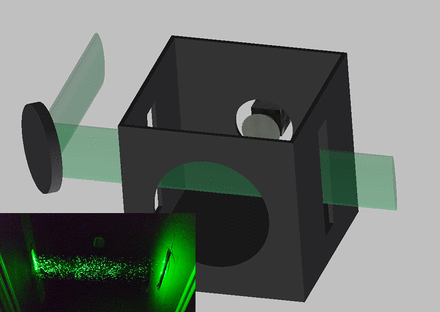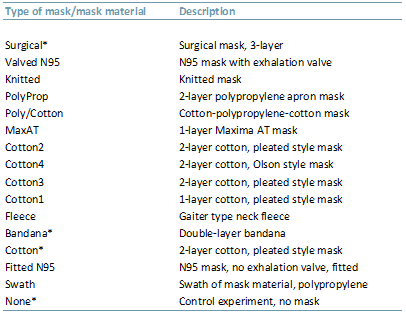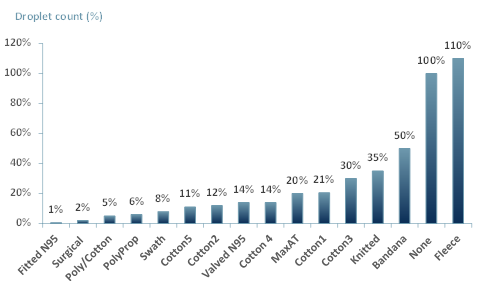Which face masks do the job they are intended for?
Researchers from Duke University in the US published a study in Science Advances where they used a simple method to determine the efficacy of the different types of masks that are now on the market as a result of Covid-19.
The method of observation uses a laser beam and a cell phone and looks at how respiratory droplets are transmitted during normal speech patterns (we like the use of the cell phone).
The laser is beamed across through two slits on the left and right sides of the box forming a light thin ‘sheet’.
There is one hole on the front side of the box that the person speaks through and the cell phone is placed in the hole on the back side and records the light that gets spattered by the respiratory droplets. The droplets are counted using a simple algorithm.

Source: Duke University
The test is carried out with the person first not wearing a mask and then wearing a mask in order to record the difference in particles measured.
Overall they tested 14 different types of mask or mask material including an N95, which is used by healthcare workers and a control experiment with no mask (see Exhibit 1).
Exhibit 1 – Types of masks used in the study with descriptions

Sources: ACF Equity Research; Science Advances; Note: * masks/material were tested by four individuals. All others by one
The data showed that N95 was the most effective (see exhibit 2 below), followed by the three-layer surgical mask and then the homemade cotton masks.
Neck fleeces, bandanas and knitted masks did not perform very well. In fact, the fleece allows for more particles to be measured than someone who was not wearing a mask.
Exhibit 2 below shows the results of the different types of masks and mask materials that were tested and their relative particle count out of 100%. The lower the % the less amount of particles observed. Note the unexpected effect of Fleece masks.
Exhibit 2 – Droplet count from face mask transmission, 2020

Sources: ACF Equity Research; Science Advances
The message here is clear. People should be encouraged to wear masks, but they need to be wearing the right type of mask.
This is not just a technology and healthcare testing story; it also touches usefully on current social media trends. Covid-19 has created a greater and more significant reliance on social media platforms as a way to diffuse information. People have been posting, governments are using Facebook for Covid-19 alerts and track and trace apps are soon to be the norm.
This immediate and perhaps even excessive flow of information is good in many ways but also has its downfalls.
This article shows us that the plethora of masks available to choose from is good because it encourages people to wear masks, fashion comes into play here too to encourage adoption. On the other hand, the danger is that individuals do not fully understand the repercussions of the choices they make and rely solely on, say, a bandana, or choose a fleece mask…
Whilst it is difficult for governments to regulate these home businesses and ensure that they are producing masks to the right standards, individuals may well start taking studies such as this one into consideration when it comes to their safety. This is a relatively rare example where government intervention in a market to enforce comparatively labelling or example would be very positive, prima facie.
What these entrepreneurs, start-ups and smaller companies can do for their part is make sure they show investors they are carrying out their business activities in the right way. For small and mid-cap companies this would mean incorporating an ESG policy into their core business operations.
As individuals and retail investors become more environmentally conscious, they are also interested in the social and governance policies of the companies they consider as investment candidates. Having an ESG policy opens up a lot more opportunities for small and mid-cap companies and makes them more attractive to investors.
















